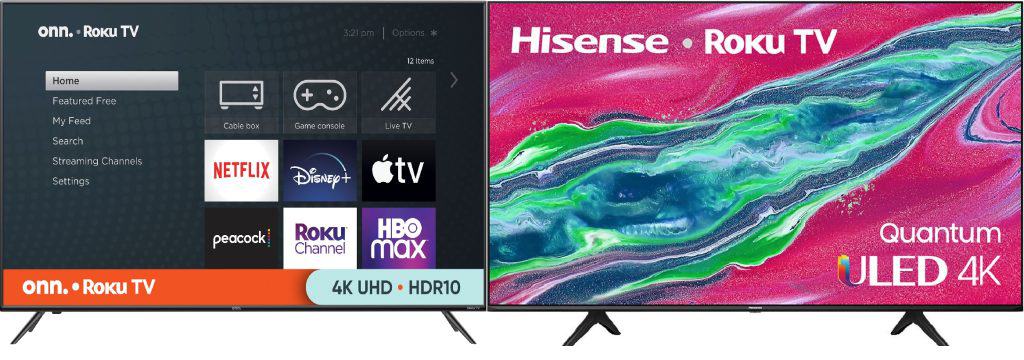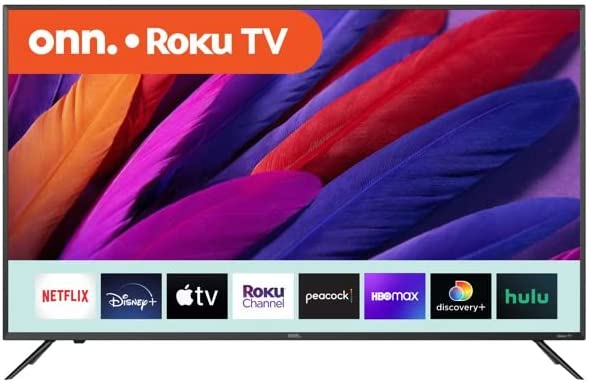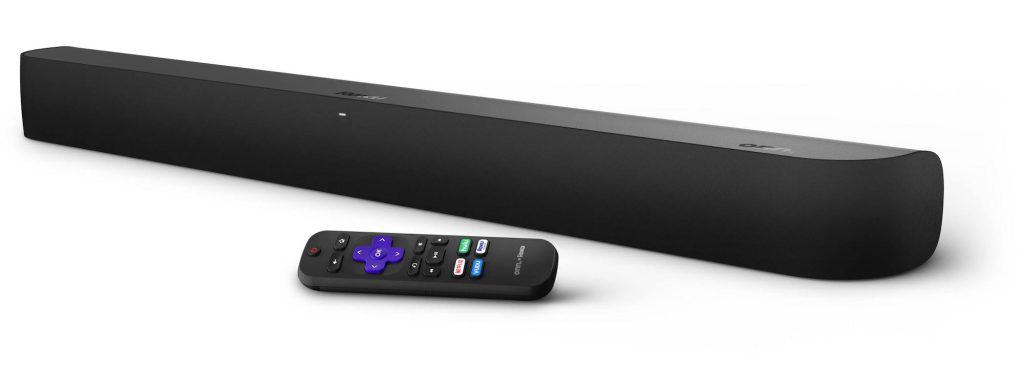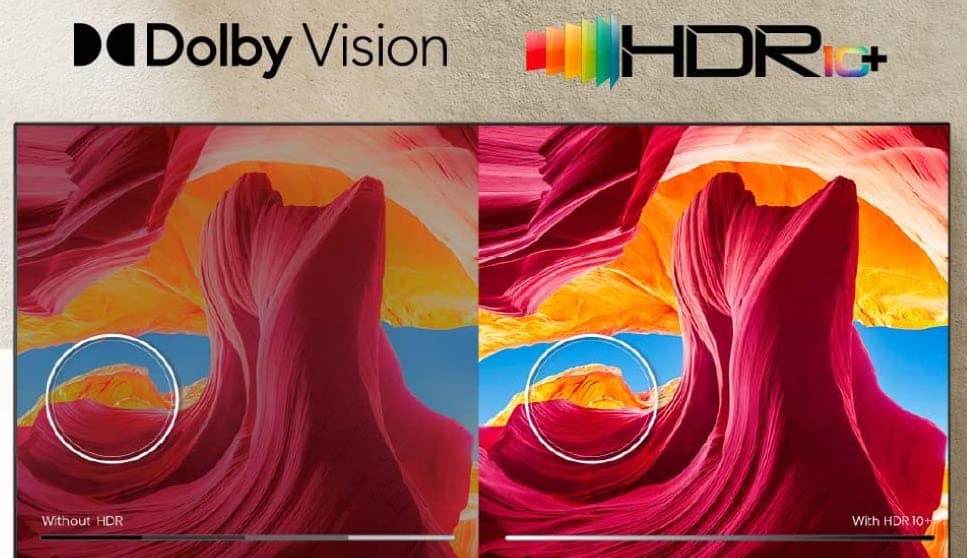When picking a budget TV, you inevitably have to compromise on certain features. That said, nowadays, there are a handful of notable low-cost TV brands on the consumer market. In other words, there are more than enough options to pick from, allowing you to make sure you get the best value for your money. In this post, we’ll compare two such brands that are particularly popular in the US. Read this Onn vs Hisense comparison article to find out which brand is the better choice for you.
Onn vs Hisense – Quick Comparison
Onn TVs are exclusively manufactured for Walmart as this multinational retail company is Onn’s parent company. Like BestBuy’s Insignia TVs, Walmart owns its own TV line and sells these products in-store, on its site, and recently, on Amazon.
Although Onn TVs can’t match the quality or design of a premium TV set, they don’t strive to compete in that market. These TVs target budget buyers, aiming to deliver decent quality in a good all-around set without breaking the bank.
The other company we’re highlighting in this article, Hisense, is one of the largest global TV manufacturers. The company is headquartered in China and has held the top spot in total market share in its home country since 2004. In the past decade, Hisense has made a stronger push in the global market, gaining significant popularity in the US and many European countries.
Features Face to Face
Panel Technology

Most Onn TVs use DLED panel technology. This means that they employ a direct LED backlight, a less preferred option than full-array backlight configurations. Hisense has the edge in this category, as it manufactures models with various types of panel technology, including ULED, QLED, and OLED.
Image Processor
Onn TVs come with the Amlogic processor, a fairly basic and simplistic processor without any advanced image upscaling abilities. Conversely, most newer Hisense TVs have a Quad-Core processor that possesses superior image processing capabilities compared to the Onn processor. Hisense’s image processor has some 4K image upscaling capabilities and can decode most video formats out there.
Motion Technology
Onn TVs motion technology is okay. The response times are decent, but there’s almost always a blur behind fast-moving content. Not only this, but the transitions are also a bit slow, as Onn displays take a fairly long amount of time to fully transition from one color to another.

On the contrary, Hisense TVs offer much better motion technology than Onn models. What’s more, some of Hisense’s TVs deliver motion response times that trump models from premium TV manufacturers.
Many Hisense models can fully transition between colors in less than 15 milliseconds. There are even some Hisense models that offer sub-10 millisecond response times.
Picture Quality
Contrast Ratio / Black Level
The native contrast ratio on Onn TVs is pretty good but can’t compare to what most Hisense models can deliver. Some Hisense models, like the H8G and the H9G, have an outstanding native contrast ratio, which can further be improved with local dimming. Although the contrast can vary between different Hisense units, most Hisense TVs can produce deep and saturated blacks.
Local Dimming
As Onn TVs feature a direct backlight configuration, they don’t have any local dimming capabilities. On the other hand, Hisense models offer excellent local dimming properties. Most newer Hisense models come with full-array local dimming, meaning that they handle blooming pretty well, so there’s no annoying glowing around bright objects and subtitles.

Peak Brightness
It makes no sense to conduct a more in-depth peak brightness comparison between Onn and Hisense, as Onn TVs offer really disappointing peak brightness numbers. And, considering that most Hisense models that have come out in the past couple of years offer very good SDR and HDR peak brightness, Hisense has a massive advantage in peak brightness performance.
Color
We were also disappointed to see that the color gamut and color volume of Onn’s TVs are equally inadequate as the peak brightness numbers. If you have a keen eye for video quality, you’ll quickly notice that the colors on Onn TVs don’t look as rich and vivid as they should.
And, much like with peak brightness, Hisense outclasses Onn in terms of color reproduction. Hisense TVs offer rich wide color gamuts and have excellent color coverage across different luminosity levels.
Viewing Angle
Seeing that Onn TVs use a slightly varied version of LED panels, they have fairly poor viewing angles that mark all LED TVs. In Hisense’s case, there are too many models in its lineup, so it’s challenging to give a holistic verdict. Most Hisense TVs offer decent to okay viewing angles, although you can also find some models with very good viewing angles.
Still, neither brand offers any models with overly impressive viewing angles and aren’t very suitable for wider seating arrangements. For this, it’s best to look at LG’s models. LG’s TVs are more expensive than Onn’s or Hisense’s but offer considerably better performance in this regard.
Reflections / Anti-glare
Most Onn and Hisense TVs come with a semi-gloss finish. This type of screen reflection coating keeps total reflections between five and six percent. Additionally, some Hisense TVs, like the H9G, have a glossy screen finish.
The semi-gloss screen finish has inferior anti-glare properties compared to a glossy screen finish that you would find in most premium TV sets from manufacturers like Sony and Samsung. As Hisense offers several models with a glossy screen finish, we give it an advantage in this category.
Sound Quality
As with picture quality, you shouldn’t expect the sound quality of Onn TVs to blow you out of the water. Although the sound profile is well-balanced, it does sound “echoey” at times. In other words, Onn TVs can’t reproduce the true quality of the audio content as their speakers simply aren’t good enough.
Additionally, Onn TVs can’t get very loud, and the bass is quite flat. All of this means that Onn TVs are okay in a quiet and small space, but if you’re looking to put this TV in a larger room, you should consider pairing it up with a soundbar. Speaking of which, Onn also manufactures a RokuSmart soundbar which goes great with most Smart TVs.

Hisense TVs undoubtedly deliver better sound quality than Onn models. The bass is more powerful, and most Hisense models can get reasonably loud. Equally as important, the sound profile on Hisense TVs is well-balanced, so music and dialogue are always clear, even at higher volume levels. Moreover, many newer Hisense models have advanced features like DBX Total Sonics and DBX Total Surround.
Smart TV Platform (Operating System)

For two budget-oriented brands, Onn and Hisense offer very solid Smart TV operating systems. More precisely, Onn TVs exclusively use Roku TV, whereas most Hisense TVs use the Android TV OS, and some models employ Roku TV. Here’s how the two platforms compare:
| OS Features | Onn | Hisense TVs |
|---|---|---|
| OS Version | Roku TV | Android TV/Roku TV |
| App Selection/Variety | 7/10 | 8/10 |
| App Smoothness | 6/10 | 7/10 |
| Ease of Use | 6/10 | 7/10 |
| Interface Layout | 7/10 | 8/10 |
From a general perspective, Hisense TVs offer a better all-around Smart TV platform. That said, if you’re primarily looking for a Roku TV that would offer superb streaming support, Onn TVs are a really good choice in this regard.
Connectivity
Connectivity properties are definitely not at the top of the budget buyer’s list. However, these features are critical to consider if you want to utilize all of the Smart TV’s features. This includes connecting different devices with your TV, accessing the Internet through it, or even taking advantage of voice control features. With that in mind, we’ll compare Onn and Hisense TVs through their input characteristics, voice assistants, and supported wireless technologies.
Inputs
Input specifications are very important to consider, even when buying a budget TV set. These specs can significantly influence how much you can get from your TV in terms of overall connectivity, especially in aspects like gaming. Considering this, we’ll compare the input specs of Onn and Hisense 4K TVs in the same price range to see what you can expect from each model:
| Input Ports | Onn 4K Roku TV | Hisense U6G |
|---|---|---|
| HDMI Ports | 3 HDMI 2.0 Ports | 4 HDMI 2.0 Ports |
| USB Ports | 1 USB 2.0 Ports | 2 USB 2.0 Ports |
| Digital Optical Audio Out | 1 Port | 1 Port |
| Ethernet Port | Yes | Yes |
| Price | Check Price on Amazon | Check Price on Amazon |
As you can see from the direct Onn vs Hisense TV comparison in the table above, Hisense TVs in the same price range offer better input support across both HDMI and USB ports.
Additionally, Onn TVs aren’t very suitable for gaming when you consider their input lag. For instance, the Onn 4K TV has an abysmal input lag of around 32 milliseconds. For reference, most users notice a perceptible performance difference when the input lag is longer than 15 milliseconds.
By contrast, Hisense TVs offer impressive input lag times. The U6G model from the table above boasts lag times less than 11 milliseconds across all supported resolutions. Moreover, if you opt for a more expensive Hisense model, you can count on even more remarkable input lag times.
Voice Assistants
The Smart TV remote that comes with Onn TVs is very basic and doesn’t offer any voice control options. While this is unfortunate, as Onn TVs run on the Roku smart platform, you can set up voice assistant options by purchasing a Roku controller with voice assistant support. You can also connect it to Amazon Alexa or Google Assistant by buying a dedicated device.

In comparison, as most newer Hisense models operate on Android TV, you can rely on complete voice control support through Google Assistant. Furthermore, you can also find Hisense models that run on the Roku TV software. Again, this is another category in which Hisense TVs have a clear advantage over Onn models.
Wireless Technologies
Both TV manufacturers include the universally adopted wireless technology standards. These are the 2.4GHz and 5GHz standards. Additionally, Hisense medium and higher-range models also offer Bluetooth support.
Unfortunately, the Onn 4K Roku TV doesn’t provide Bluetooth support, meaning that you can’t connect any wireless audio or control devices to it. Considering this, Hisense offers better support in terms of wireless connectivity.
Standout Features
When it comes to budget brands, there’s often not much room for implementing any advanced standout features. In this sense, you shouldn’t expect any standout features in Onn models, as they are pretty basic and lack any sophisticated gaming or content-enhancing settings.

In contrast, Hisense TVs do come with a handful of standout features that set them apart from Onn models and other budget TV sets. Many Hisense TVs come with Dolby Vision support, a great feature to have when watching HDR movies and TV shows. Moreover, you can find some Hisense models that also support gaming features like G-SYNC and FreeSync.
Price
Looking at price alone, Onn TVs are arguably the most affordable models you can buy. This is perfectly understandable, as Onn models are as elementary as Smart TVs can be. In comparison, Hisense TVs are more expensive, but this is primarily because they come with plenty of advanced features that aren’t available in Onn models.
Given this, if the price is the only factor, Onn TVs certainly have the edge in this category. However, if you look at it through the lens of overall value for your money, Hisense models come out on top again.
Conclusion
Considering all of the features we’ve compared and highlighted in this Onn vs Hisense post, we can confidently say that the latter brand is undoubtedly a more trustworthy one. Hisense is a much more reputable TV manufacturer. Their TVs are better across the board in almost every category we’ve tested in this Onn vs Hisense comparison post.
That said, although Hisense is one of the best budget brands in the world, it can’t compete with Onn’s pricing. With that in mind, if you’re looking for a barebones Roku TV with decent picture quality and you’re buying on a tight budget, Onn is the better choice. On the other hand, if you want your new TV to include some advanced features and better image quality characteristics, Hisense models are the preferable option.

Hi Jon, being a woman who knows nothing about TV electronics you really help me make a decision between onn and Hisense TVs at Walmart thank you so much for the help I really appreciate it
That’s great to hear, Shay! I’m so glad we could help in your purchase decision 🙂